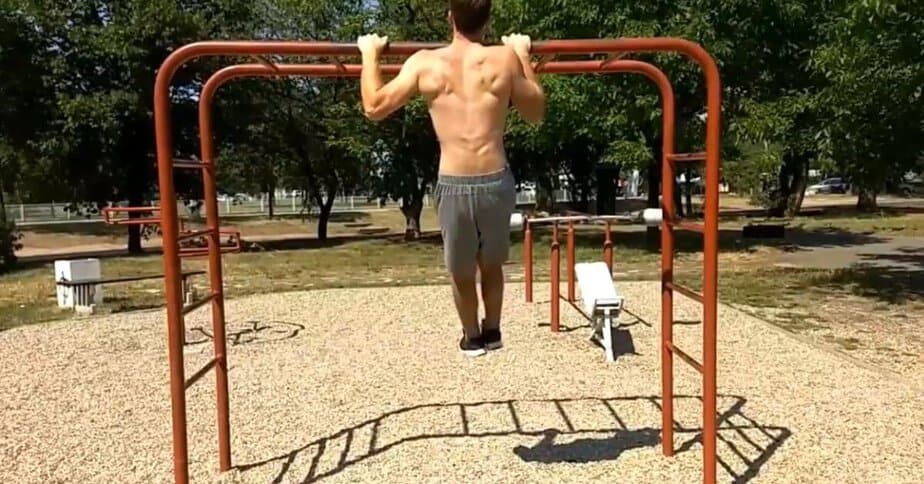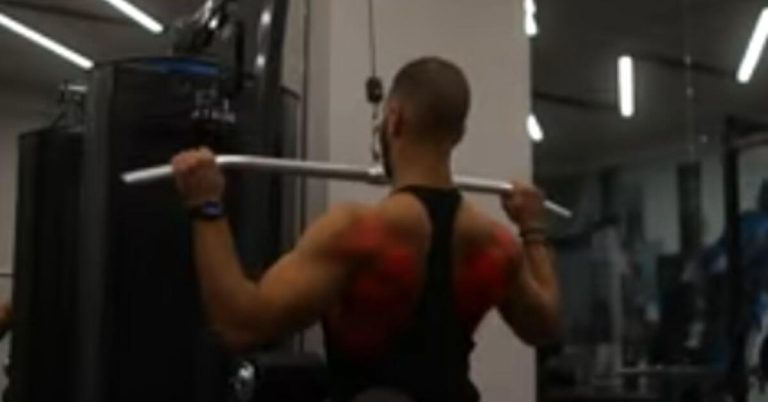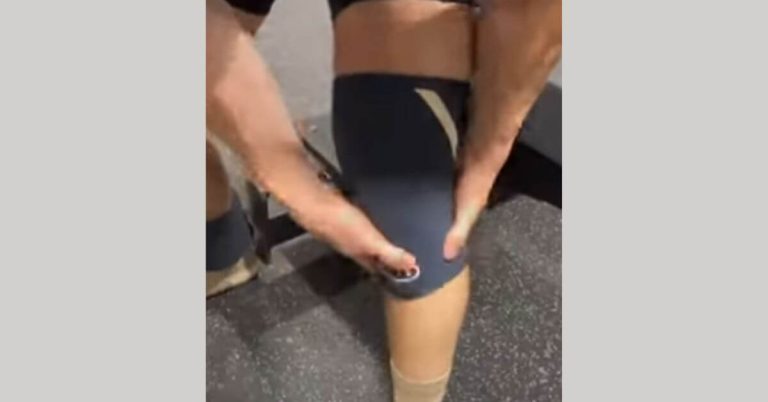Why Are My Lats Uneven? Discover the Solution Now!
Last Updated on December 3, 2023 by Justin Harris
Why Are My Lats Uneven: If your lats are uneven, it could be due to an improper workout program or poor exercise technique. If the difference is not significant, you can balance out your lats to some extent by incorporating exercises like one-arm cable rows and one-arm lawnmower starts with progressively heavier dumbbells.

However, it is important to note that some natural asymmetry in muscle development is common. Taking care of your posture and flexibility can also help prevent muscle imbalances.
Understanding Uneven Lat Development
Understanding uneven lat development is important for individuals looking to improve their overall physique and strength. Common causes of uneven lats include the impact of improper workout programs, the effects of poor exercise technique, and the role of posture in lat development.
Starting with an improper workout program can put uneven stress on the lats, leading to asymmetrical development. It is crucial to follow a balanced and tailored workout plan that targets both sides equally to address this issue.
Poor exercise technique can also contribute to uneven lats. Using an incorrect form or relying too much on one side during exercises can result in imbalances. It is essential to focus on proper form and engage both sides of the body during lat exercises.
Posture plays a significant role in lat development as well. Poor posture can contribute to muscle imbalances and affect the recruitment of the lat muscles. It is important to maintain good posture throughout the day and incorporate exercises that reinforce proper posture.
By addressing these common causes, individuals can work towards achieving balanced and evenly developed lats. With a comprehensive approach that includes a proper workout program, correct exercise technique, and attention to posture, uneven lat development can be overcome.
Correcting Muscular Imbalances
Correcting muscular imbalances in your lats is essential for achieving balanced muscle development. By addressing imbalances through specific exercises, such as one-arm cable rows and weighted pull-ups, you can improve symmetry and ensure optimal muscle function in your back.
Assessing lat imbalance symptomsSymptoms of a latissimus dorsi muscle injury can include pain in the lower back or shoulder, weakness in the affected arm, difficulty with lifting or pulling movements, and limited range of motion. |
Targeted exercises for balancing latsTo correct uneven lats, incorporate exercises such as one-arm lat pulldowns, single-arm cable rows, pull-downs, one-arm dumbbell rows, and seated cable rows. These exercises will help to target and strengthen the weaker lat, bringing it in balance with the stronger side. |
Importance of unilateral exercisesUnilateral exercises, or exercises that target one side of the body at a time, are crucial for correcting muscular imbalances. By focusing on each lat individually, you can ensure that both sides are equally engaged and develop strength and symmetry. |
Incorporating different rowing variationsAdding variations to your rowing exercises can further contribute to balancing your lats. Try incorporating different rowing variations such as horizontal and incline one-arm cable rows, as well as one-arm lawnmower starts with progressively heavier dumbbells. Chin-ups can also help balance the lats by focusing on pulling harder with the affected side. |
Overall, correcting muscular imbalances in your lats requires a targeted approach. By assessing the symptoms of lat imbalance and incorporating targeted exercises, unilateral exercises, and different variations of rowing exercises, you can effectively balance your lats and achieve better overall muscle development. Don’t forget to maintain good posture and flexibility, as they also play a role in correcting muscular imbalances.
Proper Technique For Lat Exercises
Proper technique is crucial for effectively targeting and developing the lat muscles. When performing lat exercises such as lat pulldowns, one-arm rows, and seated cable rows, maintaining correct elbow positioning is key.
Common mistakes in lat pulldowns often involve using momentum to lift the weight and not fully extending the arms. Remember to keep the elbows slightly in front of the body, pulling the weight down towards the upper chest while engaging the lats.
For one-arm rows, focus on keeping the back flat and the core engaged. Pull the weight towards the waist in a controlled manner, making sure not to rotate the torso or let the elbow flare out too wide.
In seated cable rows, sit tall with the knees slightly bent and the feet firmly planted. Keep the shoulders down and back, and pull the cable towards the lower chest while squeezing the shoulder blades together.
Read Also,
- Are 16 Inch Biceps Big
- How Long for Npp to Kick in
- Creatine Doesn’t Dissolve
- Elliptical for Short Person
- Best Treadmill Under 200
- Schwinn A40 Elliptical Review
- Best Exercise Bike Under $200
- Best Treadmill for Home Under 300
- Are Air Forces Good for Squatting
- Which is Better Hydroxycut or Dexatrim
- Best Women’s Sauna Suit for Weight Loss
- Why Do Some Cable Machines Feel Heavier
Strengthening And Maintaining Muscle Mass
To strengthen and maintain muscle mass, it is important to address uneven lats. Correcting this imbalance can be achieved through exercises such as one-arm cable rows, horizontal and incline rows, and focusing on proper form and technique. Improving posture and flexibility also play a role in addressing and preventing muscle imbalances.
Strengthening and Maintaining Muscle MassWeighted pull-ups are effective for targeting and building lat muscles, promoting symmetry and balance. Regular pull-ups also contribute to overall strength and can improve muscle development in the lats. Additionally, incorporating exercises such as T-bar rows can isolate and target the lats, helping to correct imbalances. Maintaining cardiovascular fitness is also important in preserving muscle mass.
Incorporating cardio exercises into your routine can help prevent muscle loss while promoting overall health and fitness. It is essential to focus on proper form and technique in all exercises to optimize results and minimize the risk of injury. Regularly assessing your progress and making adjustments to your workout program can help address and correct uneven lats. Remember to consult with a fitness professional for personalized guidance and recommendations tailored to your specific needs and goals.
Achieving Symmetrical Lats
Correcting uneven lats can be achieved through targeted exercises such as one-arm cable rows and lat pulldowns, along with maintaining proper form and technique. It is important to address muscle imbalances and consider factors such as workout program, posture, and flexibility for optimal results.
|
Uneven lats can be a common issue for many individuals seeking a balanced physique. To address this, consistency and patience are key. It is important to maintain a proper nutrition plan that supports muscle growth. Monitoring protein intake and consuming a balanced diet can aid in muscle development. Additionally, incorporating stretching and mobility exercises specifically targeting the lats can help improve overall symmetry. Engaging in exercises such as one-arm lat pulldowns, single-arm cable rows, and lat spreads can target and strengthen the lats. Seeking professional guidance and advice from a certified trainer or physical therapist is also recommended. They can provide personalized exercises and techniques to correct any imbalances and ensure proper form. Remember, achieving symmetrical lats takes time and effort, so stay committed to your fitness journey. |
Conclusion
Having uneven lats is a common issue that many people face. It can be caused by various factors such as an improper workout program, poor exercise technique, or even genetics. To fix this imbalance, incorporating exercises like one-arm cable rowing and focusing on proper form can be helpful.
Additionally, improving posture and flexibility can also contribute to better lat development. By addressing these factors, you can work towards achieving a more symmetrical back and better overall muscle balance.






